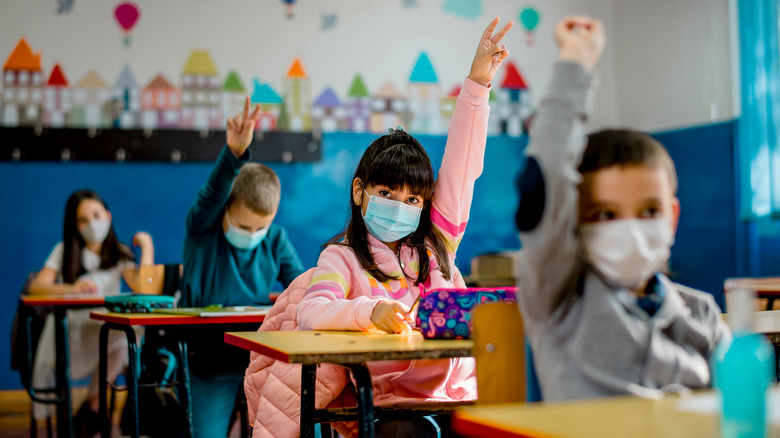What The CDC's New COVID Guidelines Mean For Schools
Schools are opening for the new school year all around the country, and at the same time, the Centers for Disease Control and Prevention (CDC) has released new guidance on COVID-19 protocols, according to National Public Radio (NPR). With an ever-changing COVID landscape, parents might be wondering what this means for their children returning to school for the 2022-2023 school year. And it might boil down to the transmission rate in your area.
The revised guidance, issued last Thursday, gives more decision-making power to local officials, especially when it comes to schools. It states that universal indoor masking for people who are not at high risk of severe illness is only recommended in communities with high transmission levels, so school districts will differ all over the country. High rates of transmission account for nearly 40% of the U.S., though, including areas like Florida, Nashville, and Los Angeles (via CDC). Masking is also recommended in the school nurse's office, and school administrators should offer accommodations to students who are immunocompromised or have disabilities, notes NPR.
What to do if you're exposed or test positive
If students or staff are exposed to the virus, they should wear a well-fitting mask for 10 days, but won't need to quarantine (via CNBC). They should get tested for COVID-19 on day five.
If students or staff develop COVID-19 symptoms, the CDC suggests they go home and get tested, per NPR. If they test positive, they should isolate for at least five days, notes CNBC. On day six, if they no longer have symptoms or their symptoms have improved and they've been fever-free for at least 24 hours, they can end isolation and return to school. However, it's still recommended to wear a well-fitting mask for 10 days from the start of symptoms.
People with weakened immune systems or who have been hospitalized with COVID-19 should isolate for 10 days and consult their doctors before ending isolation, according to CNBC. People should also isolate for 10 days if they experience difficulty breathing due to the virus.
Routine testing is generally not recommended unless community transmission levels are high, in which case, health screens may be performed for large or high-risk events, notes NPR.
The CDC said that changing the COVID guidelines is an effort to let people live without huge disruptions from COVID, although they recognized that the pandemic is not over, notes CNBC. A new statistic showed that 95% of the country's population has some level of immunity to COVID, which impacted this new guidance. Either way, school will look different this year, yet again.


